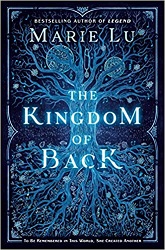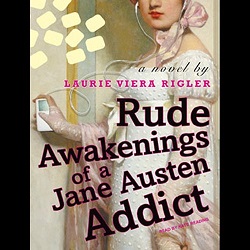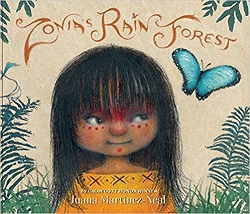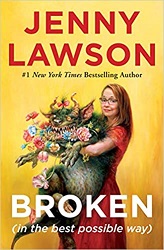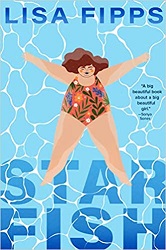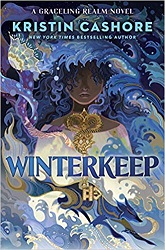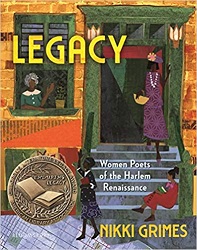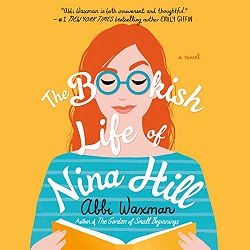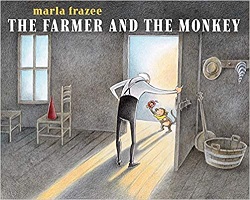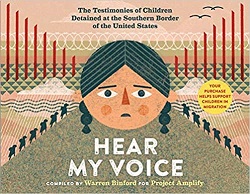 Hear My Voice
Hear My Voice
The Testimonies of Children Detained at the Southern Border of the United States
compiled by Warren Binford for Project Amplify
Workman Publishing, 2021. 96 pages.
Review written May 20, 2021, from a library book
Starred Review
It is horrible that this heart-wrenching book exists.
It’s all true. The words are taken entirely “from the sworn testimonies given by children while they were being held at Border Patrol facilities or other detention centers near the US border, often in violation of their rights.”
Those words tell us about terrible things.
The words are accompanied by illustrations from seventeen Latinx illustrators, adding tremendous power to what is said, with haunting images.
The testimonies tell of the danger they fled from, of family in the United States they want to join, of severely crowded conditions, of not getting fruits or vegetables, of waking up in the night hungry, of being verbally abused, of being cold, of having to sleep on the floor under glaring lights, of being woken up in the night at random times, of not getting medical care when sick, and more.
There are six pages after the picture book text, explaining the situation. Warren Binford, who compiled the material, is a lawyer who has visited the facilities as part of official inspections. He begins by explaining cases that established what the law requires, since 1997. This includes that children should be released as quickly as possible from government detention, and children should be released to family members. While they are in detention, they must be properly cared for in safe, clean conditions, with many specifications of what that should look like (which are clearly not being met).
Then he talks about his own visits to border patrol facilities, with an especially horrific visit to the Clint Border Patrol Station in 2019. After talking with the children as part of a mandated inspection, they decided to amplify those children’s voices and share the children’s stories. This book is part of that.
Although this is a children’s book, you’ll want to talk about it with kids, and some guidelines are included for doing that. Here’s what Warren Binford has to say about that:
We call it a “children’s book” because Hear My Voice is about children’s lives and experiences. Every word is from a child being held in a US detention facility. Every passage was selected while envisioning a child’s eyes and mind reading and contemplating the content. Every illustration is intended to help bridge the humanity between the children whose collective stories are told and the child who is trying to understand what is happening to children forced to move across national borders.
Although this is a children’s book, we recommend that thoughtful adults are on hand to help young readers process what they are learning from these children’s accounts. The book should be viewed as an opportunity to better understand human migration and children’s rights.
This book is also a dual-language book – if you flip it over, you get the same text and pictures in Spanish. So half of the 96 pages are given to each language. The unfortunate thing about that is our library is shelving it in the Spanish language section, and I’m afraid English-speaking children won’t find it.
This is a powerful and heart-breaking set of testimonies. The book also includes a section titled “Here are some ways your family can help,” and you will want to get started on those right away.
project-amplify.org/declarations
Buy from Amazon.com
Find this review on Sonderbooks at: www.sonderbooks.com/Childrens_Nonfiction/hear_my_voice.html
Disclosure: I am an Amazon Affiliate, and will earn a small percentage if you order a book on Amazon after clicking through from my site.
Disclaimer: I am a professional librarian, but the views expressed are solely my own, and in no way represent the official views of my employer or of any committee or group of which I am part.
What did you think of this book?
